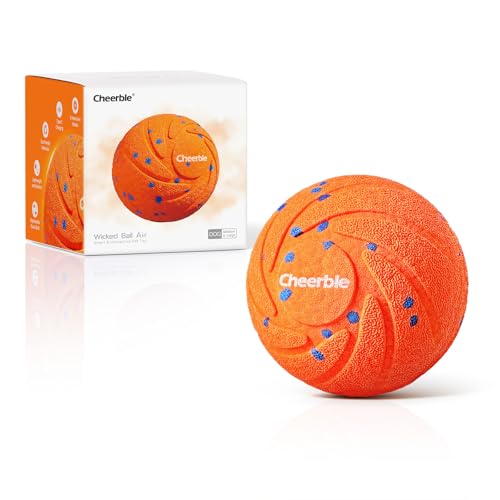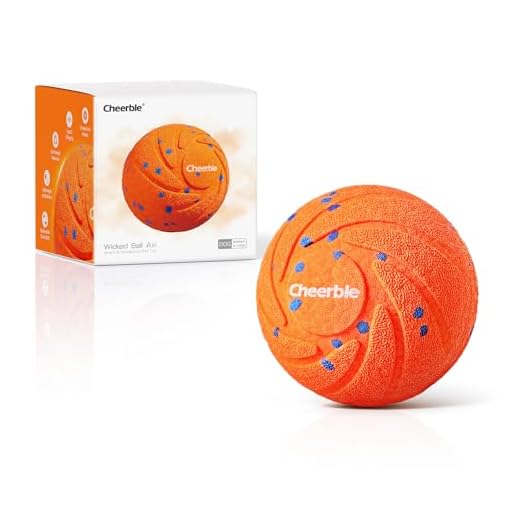




Begin with short periods of solitary play. Set up a safe space with toys that engage and stimulate. Leaving your furry companion to explore alone for brief intervals helps them feel secure in their own company. Gradually increase the duration as confidence builds.
Introduce structured routines that include time apart. Whether it’s a dedicated spot in the house or a specific area in the yard, having a designated space allows for quiet time. This not only teaches them to enjoy solitude but also reinforces positive associations with being alone.
Utilise puzzle toys or treat dispensers. These tools can keep canines entertained and mentally stimulated while you attend to other tasks. Watching them figure out how to access treats fosters problem-solving skills and promotes self-reliance.
Practice commands that encourage exploration, like “go find” or “search”. Reward them when they seek out toys or treats hidden around the house. This not only sharpens their instincts but also encourages them to act independently while they play.
Consistency is key; reinforce behaviours that promote autonomy. Praise and rewards should follow any sign of self-sufficiency. Over time, your companion will learn to embrace moments of solitude with confidence and ease.
Encouraging Self-Reliance in Your Canine Companion
Begin with short periods of separation. Leave your furry friend in a safe space with engaging toys while you step into another room. Gradually increase the duration. This builds comfort with being alone.
Implementing Structured Routine
Establish a consistent daily schedule. Include feeding, walking, and playtime at the same hour each day. Predictability helps the canine feel secure and understand what to expect.
- Feed at set times to establish routine.
- Incorporate regular exercise to expend energy.
- Designate specific play sessions to promote independence during downtime.
Encouraging Exploration
Allow opportunities for exploration in a controlled environment. Create a safe space in the yard or home where your pet can roam freely. This promotes confidence and reduces anxiety.
- Use toys that encourage solo play, like puzzle feeders.
- Incorporate scent games by hiding treats around the area.
- Encourage playdates with other animals to boost social skills.
Reinforce positive behaviour with praise and treats when they engage in solo activities. This builds a positive association with independence, making it a rewarding experience for them.
Establishing a Safe Space for Solo Time
Creating a dedicated area for your furry friend to relax alone is pivotal. This spot should be comfortable, secure, and associated with positive experiences. Start by choosing a quiet corner of your home, away from high traffic zones. A crate or a cosy bed can serve as the foundation of this space.
Choosing the Right Location
The ideal location should be free from distractions and noise. Look for a spot where your companion can feel safe yet still have a view of the surroundings. This helps them feel connected while enjoying their personal sanctuary. Avoid areas with constant foot traffic or loud appliances.
Making the Space Inviting
Fill this area with their favourite blankets or toys. Familiar scents can make it feel more like home. You could also add a piece of your clothing to provide comfort. Introducing chew toys or interactive puzzles can keep them engaged while alone. Ensure access to fresh water nearby.
| Item | Purpose |
|---|---|
| Blankets | Comfort and warmth |
| Toys | Entertainment and mental stimulation |
| Water bowl | Hydration |
| Crate or bed | Security and relaxation |
Introduce the space gradually. Encourage visits with treats and praise, allowing them to explore without pressure. Over time, they will associate this area with positive feelings, making solo time more enjoyable. This method not only builds confidence but also ensures they feel secure in their own space.
Encouraging Self-Entertainment with Toys
Choosing the right toys can significantly enhance a pet’s ability to amuse themselves. Opt for a mix of interactive and chew toys. For example, I found that a puzzle feeder kept my furry friend engaged for hours. It not only entertained him but also stimulated his mind, making mealtime fun. Look for toys that dispense treats; they encourage exploration and problem-solving.
Rotating toys is another effective strategy. I keep a few toys hidden away and periodically switch them out. This keeps the excitement alive, as he feels like he’s discovered something new each time. Just last week, I introduced a long-forgotten squeaky ball, and the joy on his face was priceless.
Durability Matters
Invest in high-quality toys that withstand wear and tear. My dog tends to destroy cheaper options quickly, which can lead to frustration. I recommend rubber toys or those made from tough materials. They not only last longer but also promote healthy chewing habits.
Exploring New Textures
Offering toys with varying textures can pique interest. I’ve noticed that my pal enjoys soft plush toys for cuddling but switches to tougher, textured ones for chewing. This variety keeps playtime dynamic and encourages him to entertain himself while I’m busy. For an added bonus, consider toys that can be filled with best raw coated dog food for added challenge and reward.
Gradually Increasing Alone Time
Begin with short intervals, leaving your furry friend for just five minutes. Choose a time when they are relaxed, perhaps after a play session or meal. Gradually extend this duration by five-minute increments every few days. Monitor their behaviour during your absence. If they remain calm, increase the time again. If signs of distress arise, reduce the duration and try again later.
Using Positive Reinforcement
Each time you return, reward with praise or a treat. This builds a positive association with your absence. Over time, your companion will understand that being alone leads to good things. Avoid making departures and arrivals overly emotional; keep them low-key to prevent anxiety.
Creating a Routine
Establish a consistent routine for alone time. Predictability helps alleviate anxiety. Choose specific times each day for these short separations, ensuring they know what to expect. Combine this with plenty of exercise and mental stimulation beforehand to tire them out, making alone time easier.
Reinforcing Positive Behaviour During Independence
Use treats strategically to reward moments when your canine companion enjoys alone time. For instance, if you notice them settling down quietly, offer a treat immediately. This builds a clear association between calm behaviour and positive reinforcement.
Create a Routine for Rewards
Establish a consistent pattern for rewards. After a successful solo session, give a treat or praise at specific intervals–perhaps every five minutes at first. Gradually extend the time, reinforcing the idea that being alone is not only acceptable but also rewarding.
Incorporate Training Commands
Integrate basic commands like “stay” or “place” during independent moments. When your furry friend follows these commands while alone, reward them with treats or affection. This reinforces their understanding that good behaviour while solitary leads to positive outcomes.
Keep sessions short and engaging. If they remain calm for even a minute, acknowledge that behaviour. As they adapt, increase the duration, always pairing their success with rewards. This technique cultivates a sense of security and contentment during solitary moments.
Regularly rotate toys or introduce new ones to maintain interest. When they engage with their toys independently, provide encouragement or treats. This not only reinforces their self-entertainment skills but also strengthens the bond between you both.
FAQ:
What are some signs that my dog is becoming more independent?
There are several indicators that your dog is developing independence. You might notice that they are more comfortable being left alone for short periods without showing signs of anxiety, such as barking or whining. They may also engage in play by themselves, exploring their environment without constantly seeking your attention. Additionally, an independent dog may be more willing to entertain themselves with toys or other activities, rather than relying solely on you for stimulation.
How can I encourage my dog to be more self-reliant during playtime?
To promote self-reliance in your dog’s play, introduce them to a variety of toys that stimulate their curiosity and encourage solo play. Interactive toys, puzzle feeders, or even simple items like balls and ropes can keep them occupied. Gradually increase the duration of time you allow them to play independently by stepping back and observing from a distance. This helps them understand that it’s okay to have fun on their own, while also giving them the opportunity to explore different ways to play.
Are there specific training techniques that can help my dog become more independent?
Yes, several training techniques can assist in fostering independence. One effective method is positive reinforcement, where you reward your dog for engaging in independent behaviour. For example, when your dog plays alone or sits quietly while you are occupied, offer praise or treats. Additionally, crate training can help your dog feel secure in their own space, allowing them to enjoy time alone. Teaching them commands such as “stay” can also encourage them to be comfortable without your constant supervision.
How do I balance training for independence with my dog’s need for companionship?
Finding a balance between training for independence and providing companionship is key. It’s essential to spend quality time with your dog during play and bonding sessions while also encouraging them to have independent experiences. Set aside specific times for interactive play or training, and then allow them periods of solo time. This way, they learn that both companionship and independence are valuable and can coexist in their routine.
What should I do if my dog shows signs of separation anxiety when trying to encourage independence?
If your dog exhibits signs of separation anxiety, it’s important to approach the situation gradually. Start by leaving them alone for very short periods and gradually increase the time as they become more comfortable. Provide them with a safe space, such as a crate or a designated area with their favourite toys. You can also use calming aids, like pheromone diffusers or anxiety wraps, while reinforcing positive behaviour when they stay calm during your absence. If the anxiety persists, consider seeking advice from a professional trainer or behaviourist for tailored strategies.
What are some techniques to help my dog become more independent?
To encourage your dog to be independent, you can use several techniques. Firstly, start with crate training, which helps your dog feel secure in their own space while giving them the opportunity to be alone. Gradually increase the time they spend in the crate. Secondly, practice short departures. Leave your dog alone in a room for a few minutes while you are in another room, gradually extending this time. This teaches them that being alone is safe and that you will return. Additionally, consider providing toys that stimulate their mind, such as puzzle toys, which can keep them engaged while you are not around. Lastly, training sessions that focus on commands such as ‘stay’ can also promote independence by teaching your dog to be comfortable waiting without your constant presence.
How can I tell if my dog is becoming more independent?
There are several signs that indicate your dog is becoming more independent. One of the most noticeable signs is their ability to spend time alone without displaying anxiety or distress. If your dog can relax in a separate room or engage with toys while you are out of sight, it’s a positive indication of their growing independence. Additionally, you may observe that your dog is more confident during walks or outings, showing less reliance on you for guidance. Another sign is their willingness to explore new environments or interact with other dogs or people without constantly checking in with you. Keep an eye on their body language; a relaxed posture and calm behaviour can suggest that they are comfortable being on their own. Gradual improvements in these areas show that your efforts in training for independence are paying off.










